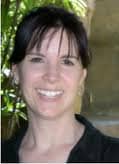
 When people learn the Enneagram, they often feel a loss of what they considered was their own, unique, personal inner core: their personality. Our personality is no longer our unique, personal core after we learn the Enneagram because we learn that our personality is a one of many pre-existing patterns – the one that describes us. This raises the question: if your personality isn’t your core, what is? In the background of my thoughts, since learning the Enneagram, I am always silently asking two questions. The main question is: ‘Who are we, given the existence of the Enneagram?’ The second question is: ‘Given that I believe the Enneagram is real, what is it?’ It’s only natural to press into this territory. The Enneagram brought me to here.
When people learn the Enneagram, they often feel a loss of what they considered was their own, unique, personal inner core: their personality. Our personality is no longer our unique, personal core after we learn the Enneagram because we learn that our personality is a one of many pre-existing patterns – the one that describes us. This raises the question: if your personality isn’t your core, what is? In the background of my thoughts, since learning the Enneagram, I am always silently asking two questions. The main question is: ‘Who are we, given the existence of the Enneagram?’ The second question is: ‘Given that I believe the Enneagram is real, what is it?’ It’s only natural to press into this territory. The Enneagram brought me to here.
Not so long ago, I was reading Evelyn Underhill’s classic book on mysticism. According to Wikipedia, mysticism is “the pursuit of communion with, identity with, or conscious awareness of an ultimate reality, divinity, spiritual truth, or God through direct experience, intuition, instinct or insight.” Towards the beginning of her book, Evelyn defines mysticism as “the innate tendency of the human spirit towards complete harmony with the transcendental order[.]”1 This made me think of the Enneagram. The Enneagram is a transcendental order of personality. The Enneagram symbol and the complex pattern of arrows that comprise it define the transcendental order of the Enneagram.
In her book, Evelyn speaks of the mystics “contrasting apprehension of the Absolute and Contingent[.]”2 Again, I thought of the Enneagram. Our Enneagram personality type is contingent on the Absolute of the Enneagram model. Evelyn writes of “a certain doubleness, a higher and lower, natural and transcendental self[.]”3 This too fits the Enneagram, with our contingent personality types stemming from the transcendental Enneagram. Could the Enneagram be part of our transcendental self?
Evelyn’s next chapter addresses “a genuine two-foldness in human nature – the difference in kind between Animus the surface-self and Anima the transcendental self[.]”4 I was able to see personality type versus the transcendental Enneagram in the same terms. Evelyn talks about a universal life: a divine and unseparated life. Not being religious, my reaction was ‘how divine’ (as in ‘how beautiful’) that we might all be part of one larger, unseparated life. Evelyn urges: “Give yourself, then, to this divine and infinite life, this mysterious Cosmic activity in which you are immersed, of which you were born. Trust it. Let it surge on in you.”5 And I thought, why not? It makes sense to me, Evelyn.
After reading Evelyn’s book, I decided to explore more deeply what mysticism was and how the Enneagram might relate to it. I reviewed the mystic literature and came up with the following insights:
In The Participatory Turn: Spirituality, Mysticism, Religious Studies, Ferrer and Sherman refer to the “embodied relationship to the mystery[.]”6 The Enneagram is certainly an embodied relationship to the mystery. Watching our own personality patterns and movements within the Enneagram system is a deep, embodied mystery.
- In The Participatory Turn: Spirituality, Mysticism, Religious Studies, Ferrer and Sherman agree with Thomas Aquinas, who drew a distinction between the essence and existence of our lives. They write that, according to Aquinas, people “while they have real existence, this existence is not their own but is participated, received as a gratuitous gift. To be created is to be fundamentally ecstatic, to feel the very root of existence as rapturously given from an infinite source not of one’s own making.”7 It is easy to feel this deeply and keenly if you look at this issue as it relates to our existence and inherent Enneagram personality. In the words of George MacDonald, “we are all what we are, because Another is what He is.”8
- Plato, in Book Six of the Republic, said that he would hold on his way until he came into touch with the nature of each thing in itself by that part of his soul to which it belongs to lay hold of that kind of reality. Prior to the Enneagram, I was not able to do this with personality types that were not a part of my personal Enneagram pattern. After learning the Enneagram, this is something that I can now do, with my increased understanding of the three centers (head, heart, gut) and the three directions that the centers move in (represented by the three types within each center.)
- Carl McColman, in The Big Book of Christian Mysticism: The Essential Guide to Contemplative Spiritiality, writes that, “Mysticism is concerned with the possibility of personally encountering a spiritual reality which is hidden from our normal awareness like the sun behind the clouds.”9 Enneagram, you were so hidden from us, but no longer.
- Carl McColman, in his same book, also elucidates that: “Mysticism is that point of view which claims as its basis an intimate knowledge of the one source and substratum of all existence[.]”10 The Enneagram strongly and intimately provides us with the mystery of an indwelling presence.
- Gerald May, in his book, Will and Spirit, writes that: “‘It seems quite certain, in fact, that rather than saying, ‘I have consciousness,’ it would be far more accurate to say, ‘Consciousness has me.’”11 We could say the same of ourselves in relation to our Enneagram types and our Enneagram motion. As Enneagram mystics, we realize the Enneagram is masquerading as us, and it could actually be called Source who is masquerading as us.
- In the History of Mysticism, Swami Abhayananda indicates that God becomes visible through the act of creating. The Enneagram could be viewed by some as evidence of our being created by Source.
- In Understanding Mysticism, Richard Woods clarifies that Swami Prabuddhananda defined mysticism as “the realization of relationship between the individual soul and the infinite reality.”12 The Enneagram can be seen as a solid bridge ever holding this relationship open.
- Caroline Spurgeon, in Mysticism in English Literature, indicates that mysticism “may be described as an attitude of mind founded upon an intuitive or experienced conviction of unity, of oneness, of alikeness in things.”13 With Enneagram awareness, it is hard not to share this conviction.
Mysticism is a vast and deep territory to explore. One reason for excited, continuing exploration of it is that, according to Spurgeon: “no one has ever been a lukewarm, an indifferent, or an unhappy mystic. If a man has this particular temperament… he is intensely and supremely happy just so far as he is steeped in it.”14 In closing, I wish you happy, mystic Enneagram times in your future.
References:
1 Underhill, E. Mysticism: A Study of the Nature and Development of Man’s Spiritual Consciousness; Methuen & Co, Ltd: London, 1911; p. 8.
2 Underhill, Mysticism, p. 5
3 Underhill, Mysticism, p. 5
4 Underhill, Mysticism, pp. 5-6
5 Underhill, Mysticism, p. 28
6 Ferrer, J. N., & Sherman, J. H. The Participatory Turn: Spirituality, Mysticism, Religious Studies; State University of New York Press: Albany, 2008; p.23
7 Ferrer & Sherman, The Participatory Turn, p. 88
8 MacDonald, G. Lilith, a Romance; G. Allen & Unwin, Ltd.: London, 1924; p. 243
9 McColman, C. The Big Book of Christian Mysticism: The Essential Guide to Contemplative Spiritiality; Hampton Roads Publishing Company, Inc.: Charlottesville, 2010; p. 30
10 McColman, The Big Book of Christian Mysticism, p. 30
11 May, G. G. Will and Spirit: A Contemplative Psychology; HarperCollins Publishers: New York, 1987; p.
46
12 Woods, R. Understanding Mysticism; Athlone Press: London, 1980; p. 423
13Spurgeon, C. Mysticism in English Literature; Cambridge University Press: Cambridge, 1913; p. 3
14 Spurgeon, Mysticism, p. 2
Katharine Rawls is an Enneagram writer and Accredited IEA teacher since 2009. She is Riso-Hudson trained. She would love to hear from you at Katharine@EnneagramNine.com.

